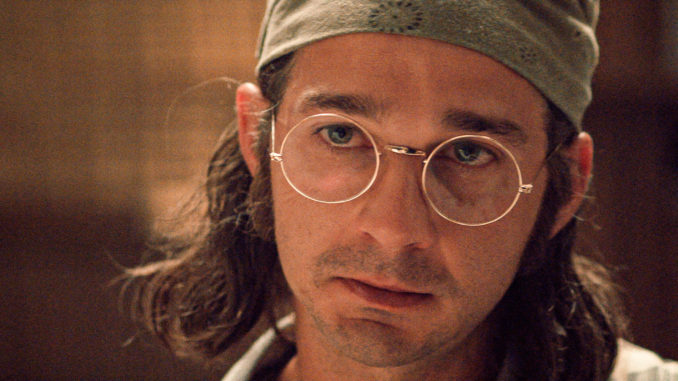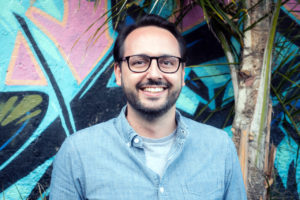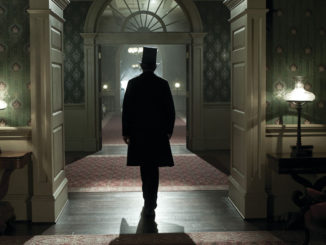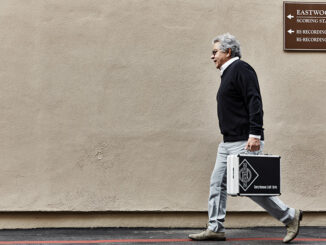
by Patrick Z. McGavin
“The only thing of value my father gave me was pain,” says Otis, the mercurial actor played as a young adult by Lucas Hedges in “Honey Boy.”
Shia LaBeouf, the movie star who’s earned headlines for his legal problems and personal scrapes, reportedly wrote the script as therapy during a rehab stint. It’s an autobiographical story, about a child actor living with his wastrel father (played by LaBeouf himself), a burnt-out, alcoholic former rodeo clown scraping by on the grim margins of the industry.
“Honey Boy” is the first feature directed by Israeli-born Alma Har’el and was awarded a special award at the Sundance Film Festival for “vision and craft.”
The story behind the camera is just as fascinating. Monica Salazar, who’s classified as Assistant Editor at the Guild, began the picture editing process, and as post moved along, she worked with veteran editor Dominic LaPerriere in what they now call an “unusual” but “very collaborative” process.
CineMontage: Any film with more than one editor leads to the question of how you divided the work creatively?
Monica Salazar: I think it was very collaborative. The process was a little unusual. I started from the dailies and the director’s cut stage, and then Dominic came along.
Once we were two editors, it became very collaborative. We were bouncing ideas off each other, and picking up the cuts of each other. There was a moment towards the end where we couldn’t tell who did what.
Dominic LaPerriere: This was definitely one of the most collaborative projects I have ever worked on. A lot of times you will just do scenes, but everyone was pitching ideas. Monica and I were cutting each other’s work and passing ideas back and forth. She would do something that would inspire me.
And I would start to do something else, and she would get an idea. By the end, we had genuinely forgotten who’d tapped what. That is not always the case where you have a lot of cooks in the kitchen.
What was your interaction with Shia and the director, Alma Har’el?
LaPerriere: Alma was there every day, all night long. It was nice when there were two of us because one of us could work with Alma on an idea and the other person could go in and try a different idea, and we’d switch back and forth.

Shia was definitely more hands off. He’d let Alma craft the story and he would give her feedback. He gave a lot of freedom to Alma to bring her version out.
I understand the structure and shape changed significantly from the script. Could you describe that process?
Salazar: The story originally was intended to be told in a linear fashion, starting with Shia playing his father and Noah Jupe, the actor who plays young Otis. That story was told first. After we finished that story, we’d go on to the present day and meet Lucas Hedges, who plays Otis as an adult.
It was very early in the editorial stage that we realized that was not going to work because we were taking away two very powerful characters an hour and 10 minutes into the movie and then introducing a new character. We realized we were missing them.
There was a longing for James and the young Otis. We realized we needed to introduce the older version of Otis earlier so that people could learn to love him and carry on the story of James and young Otis to the end of the film. With that in mind, we went into a very big restructure for the film.
LaPerriere: When it was linear, it felt like you were almost starting the movie over 60 minutes in.
When we started to blend the two it felt like the past and the present were in dialogue together, the way it feels like in real life. Those connections that were in the script were enforced rather than diminished. That’s what a lot of our works was, finding ways to support what the original intent of the script was.
The pre-title sequence is jarring because there’s no exposition. The cutting is fast, impressionistic and immersive, and it just plunges the viewer in. How did you arrive at that sequence?
LaPerriere: That was actually Alma’s idea. I remember when she started pitching the idea of opening with a long montage, I thought, “That’s crazy. You can’t open a movie with a long montage.” Then we all realized that it was really entertaining and fun and more importantly holds the story together really well.
We have to give a lot of credit to Alma for seeing something in a way that I did not originally see until we started working on it.
Salazar: It was one of the moments of crazy “what ifs,” and then suddenly we are down the rabbit hole. It was so much fun to see those things happen. The light bulb would go on, and Alma said, “Trust me guys. This is going to work.” We tried it and it did work.
LaPerriere: It’s always nice when other people’s ideas make you look good.

How did you work out your disagreements?
LaPerriere: We just said whoever yells the loudest won that particular fight. We definitely had all kinds of disagreements creatively, but the nice thing we were all aiming for the same thing.
Monica, this is your first feature as editor. How did you get this opportunity?
Salazar: I was born and raised in Monterrey, Mexico. I transferred here and did two and a half years of the film program at USC. I knew I wanted to be an editor. That was always my goal. I was really lucky in that I found people along the way who really supported me.
This movie came to be through the mentor, Doug Crise, who I assisted. He was the one who put me up for it. He saw that I was ready. He thought it would be a good opportunity for me. It was huge for Alma to see the potential. It’s your first feature and you are giving it to a first time editor. She just went for it. I am really lucky and grateful for the people who believed in me.
I know Alma really likes the idea of supporting new voices, especially women. It is something she really champions.
You came of age at a time Mexican cinema really took hold with a new wave of directors such as Alfonso Cuaron, Guillermo del Toro and Carlos Reygadas. How influential was that in your decision to become a filmmaker?
Salazar: One hundred percent. When I was 13 years old, my favorite “Harry Potter” movie came out. It was “Prisoner of Azkaban” (2004). I read in an interview that the director happened to be a Mexican. I said, “Oh, if he can do it, I can do it.” Those directors are the ones who are getting the most attention right now, and I love it because they are out there telling other people it is possible. They are all hugely important for me.
How do you balance your own desires and creative needs and still honor the work of the director, the writer and the actors?
LaPerriere: The best way to honor the director is to make the best version possible. You are all working in the same direction. You talk with the director and the writer and you figure out what the goal of the film is, what everybody was aiming for, and you give it everything you can to bring that original intent to the screen. Even though the film changed quite a bit, I think we actually got the original intent.
Given how intense and involved the post for “Honey Boy” was, was there a sense of relief when you were done, or are there things you see that wish you’d done differently?
Salazar: I am very proud of the finished cut. It was a very fun and exciting time in the edit room. By the time the movie was finished, we were all very proud
of the project. That feeling is very rewarding. Sometimes you can have a movie for too long, and sometimes you can mess it up. I am glad they took it away from us!
Patrick Z. McGavin is a Chicago-based writer and cultural critic. His writing on film appears in RogerEbert.com and the review anthology, Magill’s Cinema Annual.





